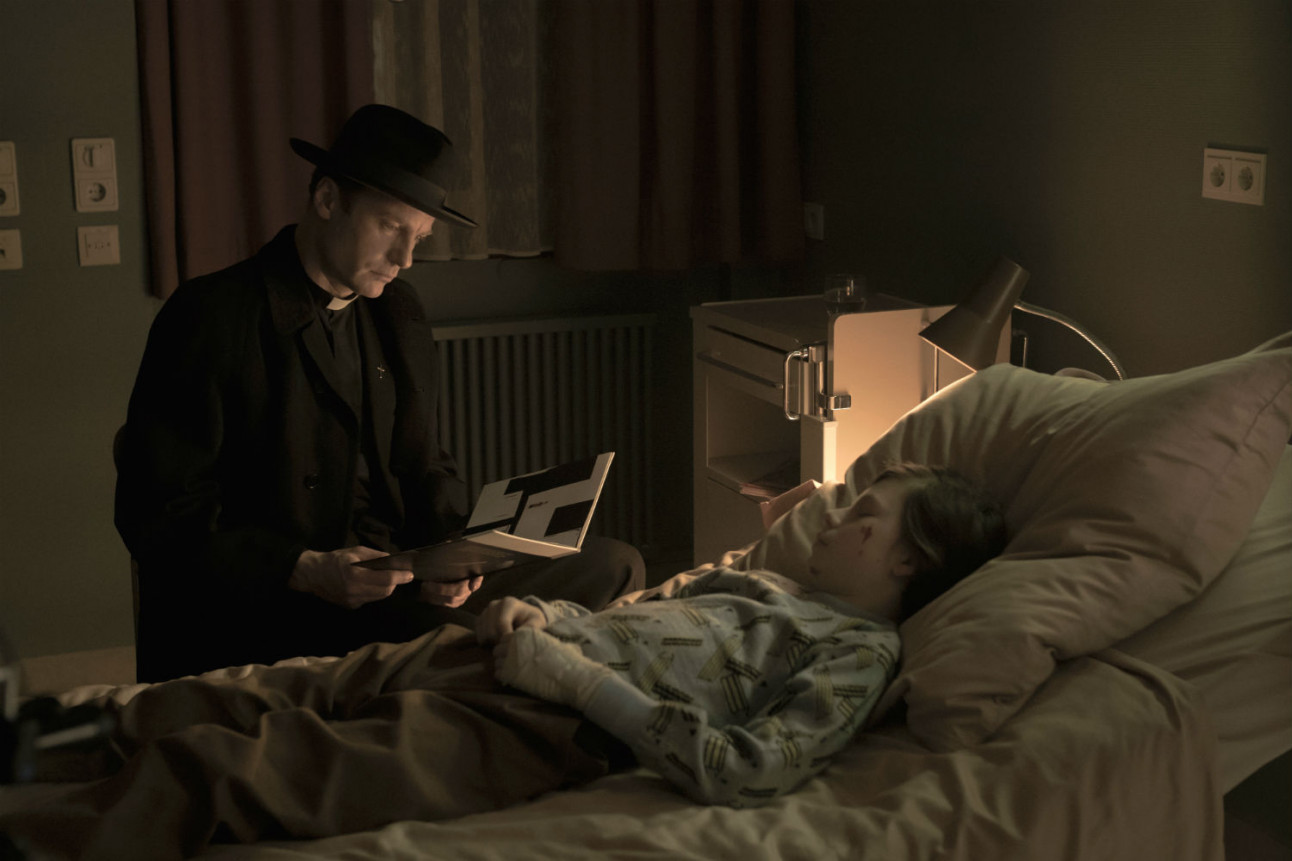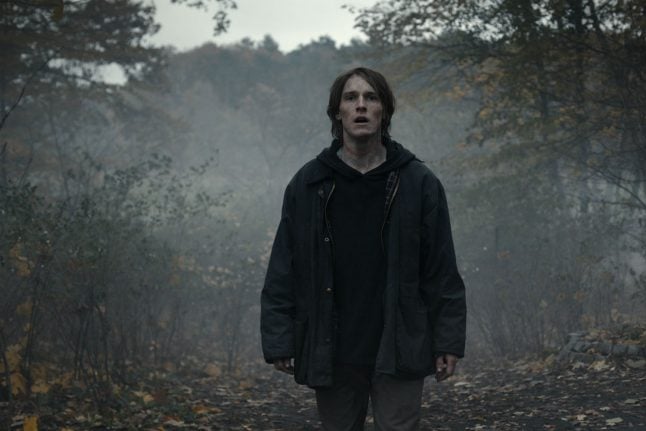The complex, layered story of four families in the small German town of Winden has captured the imagination of millions in a way that few of the streaming service’s productions have. Haven’t seen it yet?.
Here’s five reasons why ‘Dark’ is the German TV show you should be binging.
It’s all about time…
It’s hardly a spoiler to say that ‘Dark’ concerns itself mostly with time travel. Characters travel between a few distinct eras of Winden’s recent history, each 33 years apart.

A scene from the third episode of Dark. Photo handout: DPA
Their actions in each of these periods, deliberate or otherwise, have knock-on effects that reverberate across the decades to cause some truly mind-boggling complications.
If you enjoy the knotty nature of time travel narratives, trying to tease out paradoxes, then this is mostly definitely something that you will enjoy.
Just make sure that you have a pen and paper with you – you’ll need it to work out some of the more complicated relationships.
…but at the heart of it, it’s all about love.
If the time travel elements can be confusing, then the motivations of the characters may not be. Everyone is acting out of love – romantic, paternal or otherwise. Unrequited, forbidden and first loves all feature throughout the three seasons, and the family relationships forged are utterly central to the show’s narrative.
READ ALSO: Ten top films and TV shows to discover Germany from your couch
The Kahnwalds, Dopplers, Nielsens and Tiedemanns are all connected in various ways, some very surprising, and only revealed over time. What matters, however, is that it’s very easy to empathise with the characters and their actions. Most of the time, they just want to be with a certain someone, even if they are separated across the years.
It looks amazing…
Director Baran bo Odar, co-creator Jantje Friese and cinematographer Nikolaus Summerer have together created some of the most striking visuals and painterly shots of the 21st century throughout ‘Dark'’s three seasons, working off a dark palette to imbue a heavy, portentous atmosphere.
Characters mutter that Winden is ‘cursed’ more than once, and the way the town and surrounding forest are shot, one can easily believe it.
It’s not just about creating mood, however. ‘Dark’s’ complex narrative requires the occasional break to make relationships clear, or give the viewer the opportunity to fully ponder the full implications of a twist. It’s here that bo Odar and Summerer come into their own with beautiful montages that impart a lot of information without a word being spoken.
…and it sounds great.
Just as important to ‘Darks’ success is its soundtrack. You may have heard the show’s distinctive and melancholy theme, ‘Goodbye’ by Apparat, and the show’s composer, Ben Frost has created a harsh, but beautiful electronic score that manages to tell as much story as the visuals.

The actors Louis Hofmann und Oliver Masucci at the European premiere of Dark on November 19th in Berlin. Photo: DPA
However, as a show that takes place across three time periods, select songs from various time periods play a very significant role, and even comprise various plot points.
Bright, optimistic big band tunes from the 1950s, punky, aggressive music from the 1980s and moody electronica from the 2010s all set the stage and feature in those montages previously mentioned.
Really, it’s just so incredibly German.
‘Dark’ is a show made by Germans, for a German audience, despite its worldwide following. From the ubiquitous yellow revision textbooks on the desks of some of its teenage protagonists, to the strong opposition over the nuclear power plant that makes up one of the shows’ major locations, the show oozes the little details of life in Germany over sixty-six years.
Watching with Germans, I’ve been surprised at the number who’ve noted with glee some aspect of household furnishing, popular culture or simply the attitudes expressed by characters. Indeed, the show’s focus on questions of free will, in itself speaks to a very deep philosophical Teutonic mindset.
Want to better understand those somewhat serious neighbours around you? Why not give ‘Dark’ a go?
All three seasons of ‘Dark’ are available on Netflix now.



 Please whitelist us to continue reading.
Please whitelist us to continue reading.
Member comments